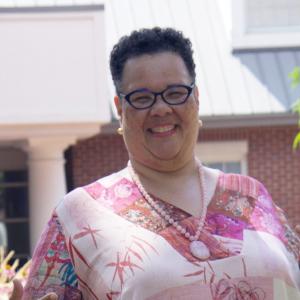Resources

Every now and then I read a book for which I have such resonance and affection that I wish I had written it. One such book is The Courage to Teach: Exploring the Inner Landscape of a Teacher’s Life, by Parker Palmer. Parker Palmer teaches that the bad days of teaching create a kind of suffering that only comes from attempting work that is loved, revered – work where our passions find expression and release. For many of us, teaching is the work our souls must have. (K. Cannon) When soul-rich teaching days are bad, then the teacher is anguished. Palmer encourages that when teachers endure unswerving bad days that that teacher must not attempt to escape, but instead, to get out of trouble, go deeper in Yes! I agree! Or I used to agree. Before the quarantine I thought Palmer’s words noble, admirable, aspirational and attainable. Now, in the midst of the yet on-going Covid pandemic, the unrelenting social violence against BIPOC people, the renewed awareness of war around the globe, the uptick of mental illness, the supply chain shortages, grieving, languishing and so on - while I am not rethinking this nobility, I am stymied by it in new ways. In the struggle with teaching-while-in-Covid, a refrain uttered by colleagues is the wish, need, outcry for withdrawal, maybe even surrender. In multiple forms, colleagues have reported their suffering with these words: I want to quit teaching every day. The series of bad days is stretching-out too long, too far, too much. A response of going deeper, doing more, reifying commitment, is not working. Colleagues do not possess the fortitude to meet their espoused loyalty. For many, the fires of passion have burned out. Some days, I count myself in this number. Lovers of the Courage to Teach are encouraged to read beyond the aforementioned pithy quotes, and focus on the grand picture of teaching and the teaching life for which Palmer speaks. We must remember that Palmer also wrote, If we want to grow as teachers -- we must do something alien to academic culture: we must talk to each other about our inner lives -- risky stuff in a profession that fears the personal and seeks safety in the technical, the distant, the abstract. During the pandemic, the practice of nurturing an inner life, rather than for growth, might now be practices of survival. While it would have been better to have risked habits and practices of talking to each other about our inner lives before the current on-going crisis and malaise, doing it right now might slow our undoing. A foundation stone of the Wabash Center is our cohort groups. We have learned that the critical role of the cohort groups lies in providing space for dialogue, networking, and relationship building. Participants often find old friends, make new friends, and deepen friendships (see our website for upcoming opportunities). Friends are the folks to whom we can pour out our hearts with the assurance that our words will not be weaponized against us at tenure or promotion processes. My hunch is that without friends in the industry of teaching, or friends beyond the industry of teaching, a teaching soul cannot make it alone, especially during this pandemic. It is in the intimacy of friendship where our inner life is discussed so that the suffering of our bad teaching days does not devour us. I have a friend I depend upon. We speak regularly. During the isolation of quarantine, we spoke every day – sometimes more than once a day. We needed to check-in, to be checked-on, and to feel connected. One of my favorite ways that we interact is to always say to each other such yammering of truth telling and troublemaking as --- you have done enough/you are enough/go take a nap/tell them no/did you eat today/ are you hydrated/go outside and sit/ set your alarm clock so you stop working/ you don’t have to reply to that email/that deadline can be renegotiated/I’ll call you later… These statements are not so much advice as they are gestures of soul tending and care. It takes friends to help with the daily work of refusing and resisting the messaging which tells us we should be fodder for the machine of misogyny, racism and the faltering capitalist democracy. We risk friendships because the alternative is madness. Mostly – my friend and I laugh! We laugh at our own foolishness, the foolishness of people who have annoyed, disappointed or angered us. We laugh about the absurdity of war and we laugh when a new binge worthy show is announced on Netflix. We remind one another not to take our jobs so seriously that we hurt ourselves, press ourselves too hard. We acknowledge that teaching in a pandemic has exacerbated the already hard struggle. On the days we want to quit, we never try to talk the other out of it.
Classroom lessons cannot be reduced to benign, disembodied facts. Teaching must acknowledge cultural complexity, the lack of truth telling and embrace the trouble likely to be stirred up in and beyond the classroom. Teach to stretch our own imaginations. Inclusion must include change, shifts in power and new methods of teaching.
The Wabash Center is convening a round table conversation to catalyze emerging projects focused upon teaching the Black woman’s experience. Along with funds for travel, meals, hotel fees, each participant will receive a stipend of $2000. The aim of the Round Table gathering is to shape a conversation that will be inter-generational, multi-disciplinary, and attend the multi-faceted scholarly identities as teachers of religion and theology. Our intent is to use this time to conceive projects that will gain traction and become life-giving.
Teaching can be a profound act of power. So then, teaching with an ethic of love, care, compassion, and kindness is paramount, especially during the viral and racial pandemics. What if academic rigor is not compromised in generous classrooms, but enhanced when we shift what counts as knowledge? The discussion lingers over teacher-burnout and knowing when it is time to leave the vocation and the classroom.

At the heart of Paulo Freire’s critical pedagogy is the dictum of “reading the word and reading the world.” As a literacy specialist who worked with Brazilian peasants, Freire learned from these students the necessity of making the connection with their lived experience. Teaching for social change takes participants beyond the “I am the teacher/you are the student” hierarchical model. I have learned that the democratic sharing of knowledges is more possible when a class connects the social justice issues, we are studying with the community just beyond our campus. Learning becomes a series of dialogues with texts and issues and the organizations who are working for immediate and systemic change. The social justice organization nearest to my campus is an emergency shelter for families less than a block from campus, Decatur Cooperative Ministry (founded in 1969). Their motto is: “Short-term shelter. Long term self-reliance.” DCM began as an interfaith response to poverty and homelessness in Decatur, GA. Their ministries grew with the gaps caused by economic inequality over the years to address needs of transitional housing, financial literacy, and food insecurity. They work toward the goal of permanent housing and family success. DCM is part of a local network of organizations addressing economic injustices in the Atlanta area. DCM’s emergency housing is aptly called “Hagar’s House.” For over twenty-five years, my introductory-level Bible class has worked in partnership with this shelter as a “practicum” or small internship that is supervised by DCM staff. Students provide various assistance: tutoring with children after school, serving as lead volunteers at weekly dinners or as overnight hosts, working the main desk, providing web and social media ideas and support, assisting in financial literacy classes, or collecting food from the local food bank. Students study poverty and housing inequities locally (through the Decatur Beacon Hill Black Alliance for Human Rights) and nationally (with the Poor People’s Campaign: A National Call for Moral Revival). My classes are diverse, with South Asian refugees, first generation college students, and a few who have experienced homelessness at some point during their lives. We take risks as we engage the social issues in the world, and we prepare for our onsite work by engaging issues of race and class, along with our stereotypes and questions. This semester we are writing blogs for the DCM newsletter on the biblical Hagar from Genesis 16 and 21 (and beyond). Blog writing emerged during the pandemic as a need identified by DCM when we had to pivot to a virtual classroom, and working with young children onsite was not an option. Our partner organization identified their needs, and they wanted to highlight our blogging as a way to give something concrete back to the staff that is useful for their member congregations, staff, board, and clients. Students are writing these blogs on Hagar along with a reduced onsite practicum. We are first engaging the scholarship on Hagar from womanist and feminist perspectives. And we are reading poetry (Mohja Kahf) and a dramatic piece (Kathryn Blanchard). Hagar as Black, Egyptian, slave, surrogate, mother, aunt, homeless, bold namer of the deity (as El Roi, the One Who Sees), and matriarch of Islam are main areas of investigation. Our community partner would like its supporters to know more about their shelter’s namesake. Students will encounter Hagar in the biblical text, in scholarship and literary imaginations, and in their work in the second half of the semester with those who live at Hagar’s House. Students will serve and share meals, open doors and supply cabinets, play with children in the community room and design programs, and begin conversations. They will explore the root and systemic causes of poverty and housing and food insecurity in the US through one nonprofit organization’s commitment to meeting emergency needs and working toward systemic social justice. We are mapping the past—the biblical stories of poverty and displacement—as well as the current ones on our campus and in our neighborhood. What I have discovered over these years of partnership is that discoveries also happen beyond the classroom walls. Engaging the complex issues of systemic poverty and homelessness takes concrete form in the faces and lives of the staff and clients at DCM. The Hagar of the Bible and Qur’an continues her story—this time in her own words.
Learner based pedagogies must constantly ask the question - “who is our learner?” Answering this question brings the startling realization that first career, entering students do not know classrooms without the internet. Unlike the teacher, those learners do not know a world other than the current age. Their cultural formation is drastically different from that of the faculty. Their reality is a different reality. What does it mean to teach adults who were formed exclusively in the digital world? What are the challenges of teaching students born in 2000?

Mystagogy, as a practice of leading an initiate into the deeper mysteries of Christian life and faith, occupies a central place in learning about Christianity. But in a secular religious studies classroom, to what degree is this exploration possible or even permissible? And more practically, how does one go about communicating, or indeed “translating,” elements of praxis, devotion, and commitment for students who do not necessarily share in the faith tradition being examined? This past fall, as part of my course on Christianity, I arranged for a Russian-trained iconographer to run a five-day workshop showcasing the process of “writing” an Orthodox icon. Under his guidance, my students followed the traditional process, used authentic materials, and implemented time-worn techniques to create their own icon. My hope was that the path through this workshop would in some small way illumine the path of mystagogy and as such, connect these students to core elements of the tradition in multifaced and embodied ways while still preserving the secular context of their learning. The image of an icon can be puzzling enough for those not familiar with the tradition. To many students, the stylized appearance of the saint or holy figure can seem alien and inaccessible. Every detail is replete with meaning and mystery and every gesture is deliberately and precisely positioned to communicate that meaning. And yet, despite the shrouding layers of tradition, a face has a remarkable ability to drawn one in. Similarly, while the ancient process of creating an icon, with its numerous steps and specialized techniques, seems even more mystifying, there are many elements that are surprisingly familiar. Creating the tempera paints involves getting one’s hands dirty separating eggs, removing yolk membranes, adding wine, and grinding in pigments on a sheet of glass. Applying gold leaf and the divine light it represents involves the use of squirrel hair, grease, beer, and bread. It seems that reinscribing the mysteries of incarnation involves everyday tools and common resources from the kitchen and garden. Working eight hours a day for six days, students spoke of the process as being unlike any other project they had done, a process that was all-consuming and meditative in character. Indeed, the very experience of time took on a markedly different quality. Students spoke of how the investment of this kind of time and energy created a deep sense of value. This was value that didn’t fit within a typical financial or economic sense of things. It was not monetary. For example, they could imagine gifting their icons but not of selling them. “After spending so much time working on this project, I value it in a way that I do not value many other objects… After experiencing first-hand the patience and diligence required to write an icon, I understand the value of those gifts and how significant they must be to the recipients.” In this example, value was not bestowed by a sacred authority but rather from the immediacy of the creative experience. The icon was valuable to these students not because it was deemed sacred but because it was part of a process of investment where its value and beauty steadily increased through the various stages of its creation. Within the secular learning context, this experience resonated with the students far more than an intellectual or theological account. For the students, the icon became a thing of value but also a thing of beauty. Interestingly, this beauty was not something they claimed credit for, a product of their individual creativity, but rather it emerged from a prescribed process into which they had little if any input. Students spoke of setting aside their role as author and creator, of moving into the background and being at the service of a tradition that surpassed their own interests and ownership. They wouldn’t be signing their icons as the artist signs their painting. From this altered vantage point, students were able to appreciate details of the tradition in different ways: the play of light and shadow, the cast of the gaze, the creases in the robes, the vividness of the pigments, and the many stages of illumination. The experience of beauty included the aesthetic features and the meaning communicated but also a certain sense of investment, of labour, and the time taken to carefully move from one stage to the next. In all, the experience of creating the icon communicated values and perspectives that are key elements of the theological and spiritual landscape, but in ways that were more immediately accessible. In the end, the process of creating the icon provided a rich and evocative path through some of the central mysteries of the Christian tradition in ways that went well beyond the repertoire of traditional instruction. An icon involves transforming a piece of wood into something sacred and in this journey, this process, we see the path of mystagogy unfold. Students followed this path towards the mystery of the image where the icon is a combination of simplicity and complexity, of the abstract and the everyday, of something small to look at and at the same time something enormously meaningful to behold. It took time to create and the layering of process and meaning resulted in an object that speaks much louder and with many more voices than its compact appearance might suggest. Despite the secular context, this workshop was a moment of connection with a vast sacred tradition, translating notions of incarnation and revelation in ways that were deeply felt, transformative, and very much at the heart of Christian identity. “The paint physically went on very thin, meaning that to get a solid colour required upwards of 20 layers of paint. This is where the reflective nature of the creation process really began for me. As the layers go on, you lose count of how many you’ve done, and time begins to bend. I found myself becoming so engrossed in the process and wanting to see that opaque colour that hours would pass without me realizing it. It is in this time that I understand there was space for a divine connection.”